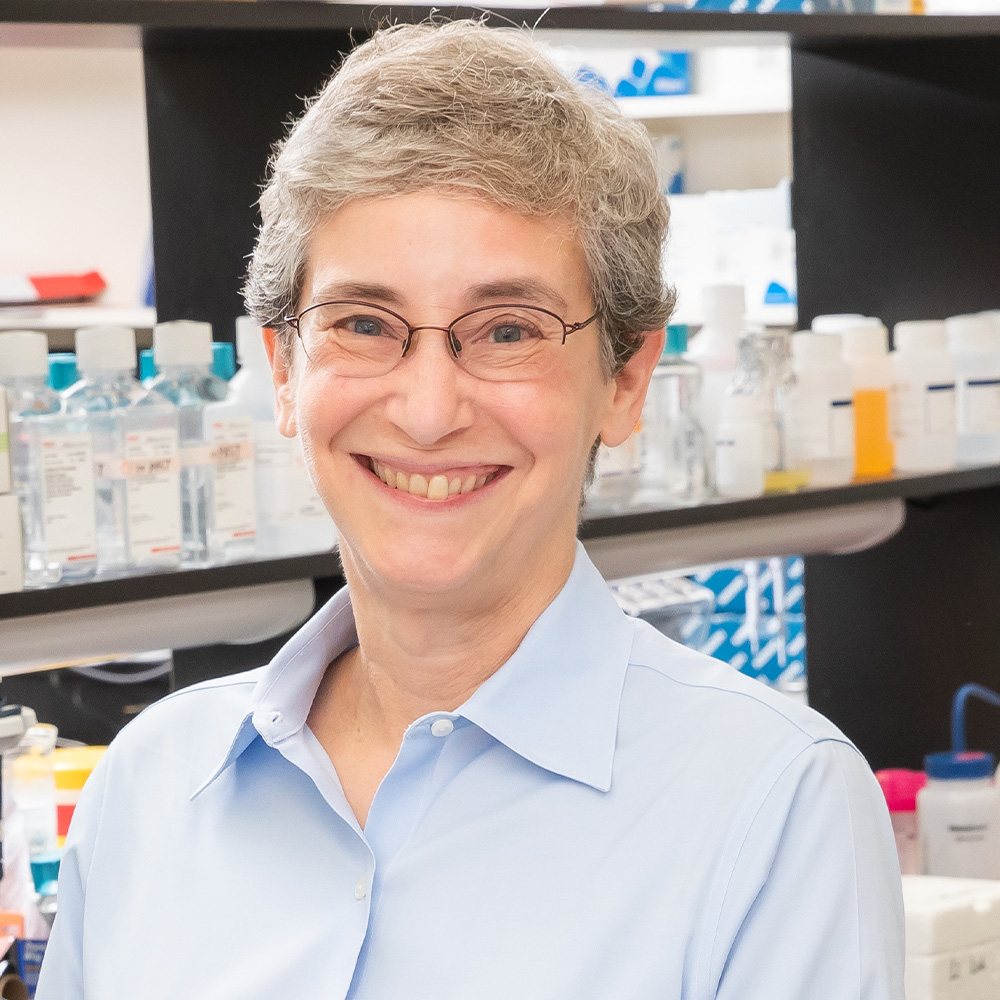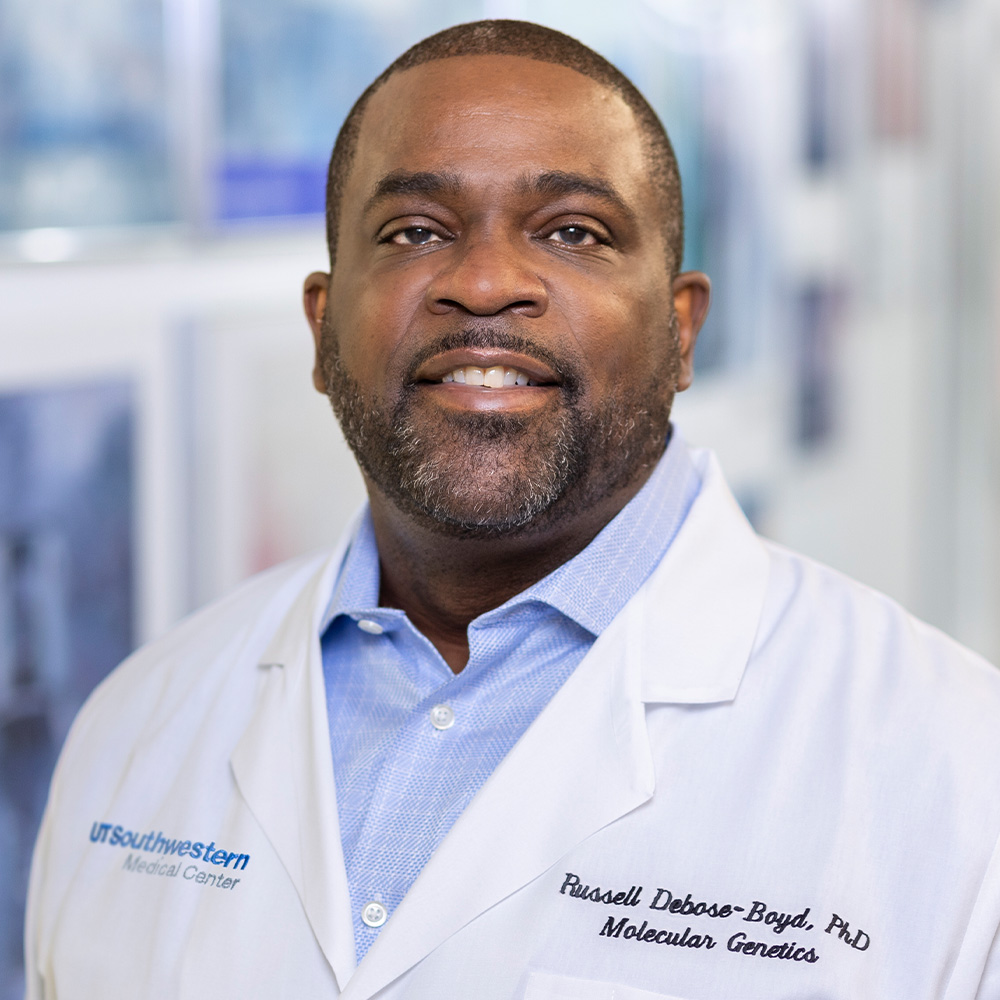Joan Conaway, Ph.D., named President-Elect of leading scientific society
Joan Conaway, Ph.D., named President-Elect of leading scientific ... UT Southwestern


Joan Conaway Elected President-Elect of ASBMB
DALLAS – Aug. 17, 2023 – Joan Conaway, Ph.D., Vice Provost and Dean of Basic Research at UT Southwestern Medical Center, has been elected President-Elect of the American Society of Biochemistry and Molecular Biology (ASBMB), one of the largest scientific societies in the world.

Joan Conaway, Ph.D., Vice Provost and Dean of Basic Research, holds the Cecil H. Green Distinguished Chair in Cellular and Molecular Biology at UT Southwestern.
Throughout her career, Dr. Conaway has held several roles at ASBMB including as a speaker and organizer of annual meetings, as an editorial board member and associate editor of the society’s flagship publication, Journal of Biological Chemistry, and most recently as a member of the society’s finance committee and on its Council as Treasurer.
For the next four years – one as President-Elect, two as President, and then another as Past-President – Dr. Conaway will serve on ASBMB’s Council overseeing the day-to-day management of the society. As President, she will work closely with ASBMB member committees and staff responsible for many of the society’s activities, including its publications and meetings programs; advocacy for the biological sciences in Congress, the National Institutes of Health, and the National Science Foundation; educational and professional development offered to students and the society’s members; and efforts to increase diversity, equity, accessibility, and inclusion for biochemists and molecular biologists of all backgrounds.
Dr. Conaway explained that ASBMB is undergoing significant change. Its journals, which in the past helped to fund many of the society’s activities, recently switched to an open-access publishing model that necessitates an adjustment in the society’s financial structure. In addition, ASBMB will need to select a new executive director as its current leader is retiring at the end of 2023.
“With long experience with ASBMB, I hope to be a steady hand during this time of transition and work with the Council, ASBMB leadership, and members to sustain and grow the society as it advances further into its second century,” she said.
Russell DeBose-Boyd Appointed Interim Treasurer for ASBMB
In addition to Dr. Conaway’s election, Russell DeBose-Boyd, Ph.D., Professor of Molecular Genetics at UT Southwestern, was appointed interim Treasurer for ASBMB. As Treasurer, he will be an ASBMB Council member and chair the society’s Finance Committee, which works with ASBMB staff to make budgetary and investment recommendations to the Council. Dr. DeBose-Boyd has served since 2018 on the Finance Committee for the society and is a mentor for the ASBMB Maximizing Opportunities for Scientific and Academic Independent Careers (MOSAIC) K99/00 program. He will serve as interim Treasurer until July 2024. He was also elected to ASBMB’s Nominating Committee.

Russell DeBose-Boyd, Ph.D., Professor of Molecular Genetics, holds the Beatrice and Miguel Elias Distinguished Chair in Biomedical Science at UT Southwestern.
The DeBose-Boyd laboratory at UT Southwestern focuses on feedback mechanisms that control the synthesis of cholesterol. In May 2023, he was elected to the National Academy of Sciences.
About ASBMB
Founded in 1906, the American Society for Biochemistry and Molecular Biology (ASBMB) is an international nonprofit scientific and educational organization located in Rockville, Maryland. With over 10,000 members, it is one of the largest molecular life science societies in the world. ASBMB’s mission is to advance science and scientific research, education, and the understanding of the molecular nature of life processes. It serves the scientific community through publications, meetings and events, advocacy, and education and professional development programs.
About UT Southwestern Medical Center
UT Southwestern, one of the nation’s premier academic medical centers, integrates pioneering biomedical research with exceptional clinical care and education. The institution’s faculty has received six Nobel Prizes, and includes 26 members of the National Academy of Sciences, 19 members of the National Academy of Medicine, and 14 Howard Hughes Medical Institute Investigators. The full-time faculty of more than 2,900 is responsible for groundbreaking medical advances and is committed to translating science-driven research quickly to new clinical treatments. UT Southwestern physicians provide care in more than 80 specialties to more than 100,000 hospitalized patients, more than 360,000 emergency room cases, and oversee nearly 4 million outpatient visits a year.
SDGs, Targets, and Indicators
-
SDGs Addressed or Connected to the Issues Highlighted in the Article
- SDG 4: Quality Education
- SDG 5: Gender Equality
- SDG 8: Decent Work and Economic Growth
- SDG 10: Reduced Inequalities
- SDG 16: Peace, Justice, and Strong Institutions
-
Specific Targets Based on the Article’s Content
- Target 4.5: Eliminate gender disparities in education and ensure equal access to all levels of education and vocational training for the vulnerable, including persons with disabilities, indigenous peoples, and children in vulnerable situations.
- Target 5.5: Ensure women’s full and effective participation and equal opportunities for leadership at all levels of decision-making in political, economic, and public life.
- Target 8.5: By 2030, achieve full and productive employment and decent work for all women and men, including for young people and persons with disabilities, and equal pay for work of equal value.
- Target 10.2: By 2030, empower and promote the social, economic, and political inclusion of all, irrespective of age, sex, disability, race, ethnicity, origin, religion, or economic or other status.
- Target 16.7: Ensure responsive, inclusive, participatory, and representative decision-making at all levels.
-
Indicators Mentioned or Implied in the Article
- Indicator 4.5.1: Parity indices (female/male, rural/urban, bottom/top wealth quintile, and others such as disability status, indigenous peoples, and conflict-affected, as data become available) for all education indicators on access, participation, and achievement.
- Indicator 5.5.1: Proportion of seats held by women in national parliaments and local governments.
- Indicator 8.5.1: Average hourly earnings of female and male employees, by occupation, age group, and persons with disabilities.
- Indicator 10.2.1: Proportion of people living below 50 percent of median income, by age, sex, and persons with disabilities.
- Indicator 16.7.1: Proportions of positions (by sex, age group, persons with disabilities, and population groups) in public institutions (national and local legislatures, public service, and judiciary) compared to national distributions.
Table: SDGs, Targets, and Indicators
| SDGs | Targets | Indicators |
|---|---|---|
| SDG 4: Quality Education | Target 4.5: Eliminate gender disparities in education and ensure equal access to all levels of education and vocational training for the vulnerable, including persons with disabilities, indigenous peoples, and children in vulnerable situations. | Indicator 4.5.1: Parity indices (female/male, rural/urban, bottom/top wealth quintile, and others such as disability status, indigenous peoples, and conflict-affected, as data become available) for all education indicators on access, participation, and achievement. |
| SDG 5: Gender Equality | Target 5.5: Ensure women’s full and effective participation and equal opportunities for leadership at all levels of decision-making in political, economic, and public life. | Indicator 5.5.1: Proportion of seats held by women in national parliaments and local governments. |
| SDG 8: Decent Work and Economic Growth | Target 8.5: By 2030, achieve full and productive employment and decent work for all women and men, including for young people and persons with disabilities, and equal pay for work of equal value. | Indicator 8.5.1: Average hourly earnings of female and male employees, by occupation, age group, and persons with disabilities. |
| SDG 10: Reduced Inequalities | Target 10.2: By 2030, empower and promote the social, economic, and political inclusion of all, irrespective of age, sex, disability, race, ethnicity, origin, religion, or economic or other status. | Indicator 10.2.1: Proportion of people living below 50 percent of median income, by age, sex, and persons with disabilities. |
| SDG 16: Peace, Justice, and Strong Institutions | Target 16.7: Ensure responsive, inclusive, participatory, and representative decision-making at all levels. | Indicator 16.7.1: Proportions of positions (by sex, age group, persons with disabilities, and population groups) in public institutions (national and local legislatures, public service, and judiciary) compared to national distributions. |
Behold! This splendid article springs forth from the wellspring of knowledge, shaped by a wondrous proprietary AI technology that delved into a vast ocean of data, illuminating the path towards the Sustainable Development Goals. Remember that all rights are reserved by SDG Investors LLC, empowering us to champion progress together.
Source: utsouthwestern.edu

Join us, as fellow seekers of change, on a transformative journey at https://sdgtalks.ai/welcome, where you can become a member and actively contribute to shaping a brighter future.







